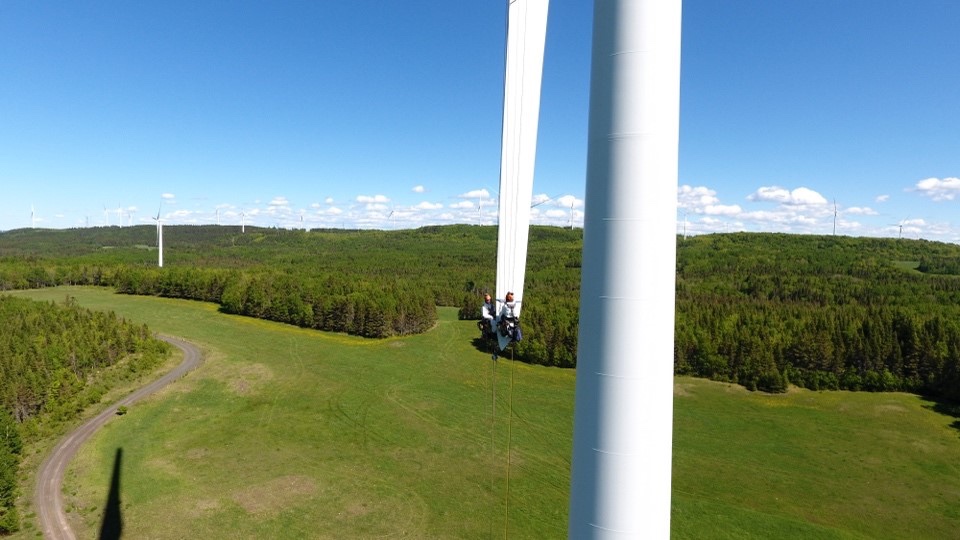The Role of a Rope Access Technician
A rope access technician plays a critical role in ensuring safety and efficiency in various high-angle and hard-to-reach work environments. Whether working on industrial sites, conducting inspections, or performing maintenance on complex structures, these professionals are trained to navigate and operate in challenging conditions with precision and expertise.

What is Rope Access?
Rope access is a method of using ropes and specialized equipment to access and perform work at height. This technique is not only efficient but also significantly safer compared to traditional methods like scaffolding or cranes. The method is governed by stringent safety standards set by organizations such as SPRAT (Society of Professional Rope Access Technicians) and IRATA (Industrial Rope Access Trade Association).
Key Responsibilities of a Rope Access Technician
Inspection and Maintenance: Rope access technicians are frequently involved in inspecting and maintaining structures such as bridges, buildings, wind turbines, and industrial facilities. They ensure the integrity and safety of these structures through visual inspections and non-destructive testing (NDT).
Construction and Repair: These technicians perform construction-related tasks, including rigging, drilling, and concrete repair, often in places that are difficult to reach by conventional means. Their work is vital for projects involving rock scaling, blasting, and other high-risk operations.
Safety and Rescue Operations: A crucial aspect of their job is to conduct safety audits and rescue operations. Rope access technicians are trained to perform rescues in hazardous environments, ensuring the safety of their team and others on-site.
Safe Practices in Rope Access
Worksite Supervision: A designated Rope Access Supervisor, typically a Level 3 Technician, oversees all operations to ensure compliance with safety protocols and effective execution of tasks.
Access Work Plan: Before starting any rope access work, a comprehensive access work plan is developed, reviewed, and updated as necessary. This includes the work method, risk assessment, and rescue plan.
Hazard Identification and Mitigation: Work team members identify potential hazards and implement corrective measures to minimize risks. The safety protocols include regular site surveys and the use of protective equipment to prevent accidents.
Rescue Preparedness: Rescue procedures are established and practiced regularly to ensure prompt response in case of emergencies. This includes self-rescue techniques and coordination with emergency services if necessary.
Equipment Inspection and Maintenance: All rope access equipment is regularly inspected and maintained according to manufacturer specifications to ensure it remains in optimal condition for use.
Training and Certification
To become a rope access technician, individuals must undergo rigorous training and certification processes. SPRAT and IRATA certifications are internationally recognized and involve multiple levels of proficiency:
- Level 1: Entry-level certification for those new to rope access.
- Level 2: Advanced techniques and supervision responsibilities.
- Level 3: Expert level, allowing for the planning and management of rope access operations, as well as rescue operations.
Industries and Applications
Rope access technicians work across a variety of industries, including:
- Mining: Conducting drilling, rock scaling, and blasting on vertical terrains.
- Construction: Performing tasks on bridges, buildings, and other infrastructure.
- Energy: Inspecting and maintaining wind turbines, hydro dams, and pipelines.
- Geology and Surveying: Providing access for exploration and industrial guiding.
Why Choose Alpine Solutions?
At Alpine Solutions, our rope access technicians are highly skilled and certified professionals dedicated to delivering safe, efficient, and cost-effective solutions. Under the leadership of Jonathan Beaupré, IRATA Level 3 and Manager of our Rope Access Division, we ensure the highest standards in every project we undertake. Our expertise spans various challenging environments, making us a trusted partner for all your rope access needs.
Conclusion
ope access technicians are indispensable in maintaining and ensuring the safety of structures in difficult-to-reach areas. Their extensive training, combined with their ability to perform a wide range of tasks, makes them invaluable in industries that demand high safety standards and efficiency. For more information on how our rope access services can benefit your project, visit our Rope Access Services page or schedule a Zoom meeting with our team today.
By incorporating these elements of safe practice, we ensure that our rope access operations are not only effective but also adhere to the highest safety standards, providing peace of mind to our clients and safeguarding our team.





Reader Interactions